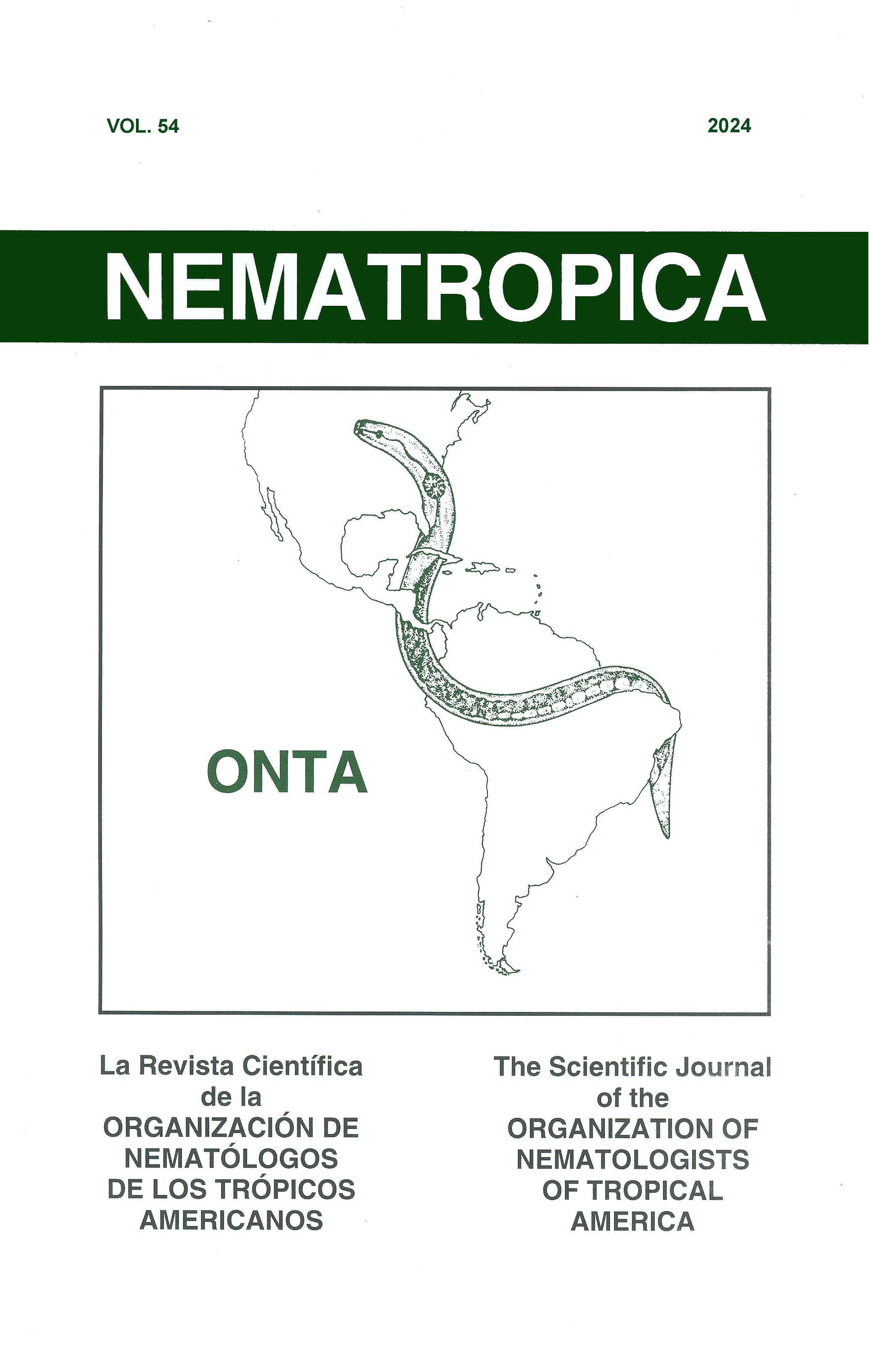HIGH THROUGHPUT PROPAGATION MATERIALS FOR EVALUATING THE RESPONSE OF YAM TO NEMATODE INFESTATION UNDER CONTROLLED ENVIRONMENT
Abstract
Yam is a vegetatively propagated crop generally multiplied using a portion (sett) of the tuber, which represents 30% of the cost of production. This study evaluated four propagation materials of yam, (i) vine seedlings from aeroponic system (VS), (ii) seedlings from semi autotrophic hydroponics (SAH), (iii) mini-tubers, and (iv) minisetts for their suitability for evaluating resistance of yams to nematodes. Two recently released yam genotypes, TDr 95/19177 and TDr 89/02665, were challenged with Meloidogyne incognita and Scutellonema bradys. Plastic pots were arranged in a screenhouse following a completely randomized design with twelve replicates. Plants were inoculated six weeks after planting with 5,000 eggs of M. incognita or 5,000 mixed individuals of S. bradys. Data were collected during vegetative growth, at harvest, and during storage. Vine length, number of leaves, and number of vines were not significantly different at the vegetative growth stage (P ˃ 0.05). At harvest, the nematodes had significant effects on vine length, fresh and dry shoot weight, and tuber diameter (P < 0.05). After storage, there were significant losses in tubers weight of 61.8% and 43.3%, respectively, for S. bradys and M. incognita inoculated plants (P < 0.05). Damage indexes for all the planting materials were not significantly different, however, nematode recovery was less in VS and SAH plants compared to minisetts and mini-tuber plants. Mini-tubers and minisetts are apparently more reliable as planting materials to be used when screening yam genotypes.

